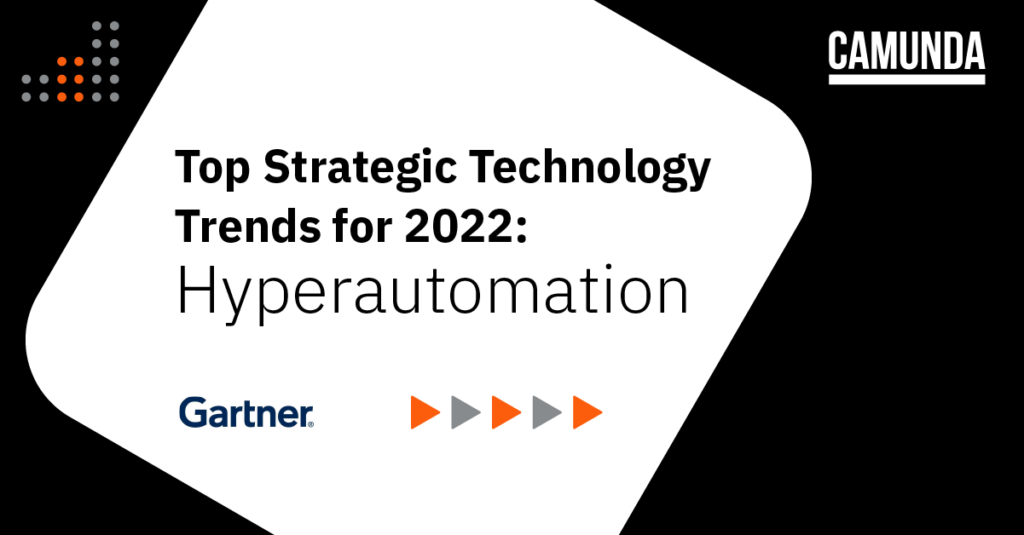What makes hyperautomation… well, “hyper”? It’s partially about scope; hyperautomation involves expanding your use of automation to include every activity in your business. It’s also about evolving your automation strategy from simple task-oriented automation to more sophisticated, business-focused process automation that leverages advanced technologies.
Hyperautomation has several facets.
The tools you use. Hyperautomation involves combining automation tools to achieve optimal results; from enterprise resource planning (ERP) systems, to intelligent business management software (iBPMS), to robotic process automation (RPA) products, to even more specialized tools that are specific to your industry or business needs.
The technologies you embrace. Hyperautomation is also about exploring and applying emerging technologies such as process mining, strategic orchestration, artificial intelligence (AI), machine learning (ML), and natural language processing (NLP).
The sophistication of your automation. When you start automating work that was previously done manually, it’s normal to focus on isolated tasks or processes that have clear boundaries or a limited scope. With hyperautomation, you move from task-based automation (which is inherently limited) to a broader approach where processes are orchestrated from start to finish, with real-time measurements and analytics built in.
As the Gartner report Top Strategic Technology Trends for 2022: Hyperautomation explains:
“The main reason that hyperautomation continues to trend is the unrelenting demand for accelerated growth through business model innovation or disruption… coupled with the underlying foundation of operational excellence across processes and functions. One of the reasons for the appeal of hyperautomation is that it can be applied to any business or IT process and is not partial to any technology or vendor.”
— Gartner, Top Strategic Technology Trends for 2022: Hyperautomation, 18 October 2021
Let’s look at three things you should know about hyperautomation:
1. Tech debt isn’t your only debt
Every organization that has spent time and money to automate business or IT processes has accrued some technical debt that slows down teams or that prevents new automation projects from launching. But most companies are burdened with other types of organizational debt, such as data debt, architectural debt, and security debt. It can be tempting to focus on reducing tech debt because it’s a familiar problem for IT and software development teams. But automation is no longer just a technical challenge; it’s a business necessity. That means all types of organizational debt are relevant to your hyperautomation efforts.
2. You don’t have to automate processes as they are
There’s a simple way to start a process automation project: sketch out what the process looks like, identify the steps that are relatively easy to automate, and repeat until you’ve automated all the steps. However, this approach doesn’t give you the chance to rethink and improve the way a process works. Gartner points out that “processes designed for humans need not be automated just as they are, but should be open to alteration to allow for better value.” It’s best to start fresh by identifying the business outcome or goal you want to achieve and designing an automated process that will get you there.
3. Strategic orchestration is a must
Most organizations use a number of specialized technologies or applications to automate business and IT processes, rather than trying to do everything with a single vendor. This plug-and-play approach is popular because it lets teams choose the right tool for the job at hand, and it gives the organization the flexibility to swap tools in and out of the technology stack with minimal disruption to the business.
However, enterprises are quickly realizing that they need a management layer on top of their diverse toolset. This management layer primarily exists to control which tool or resource executes a piece of work at a certain point in a business process, but it can also provide critical data that helps teams build their process automation roadmap.
Top Strategic Technology Trends for 2022: Hyperautomation, Stephanie Stoudt-Hansen, Frances Karamouzis, Keith Guttridge, 18 October 2021
GARTNER is a registered trademark and service mark of Gartner, Inc. and/or its affiliates in the U.S. and internationally and is used herein with permission. All rights reserved.

